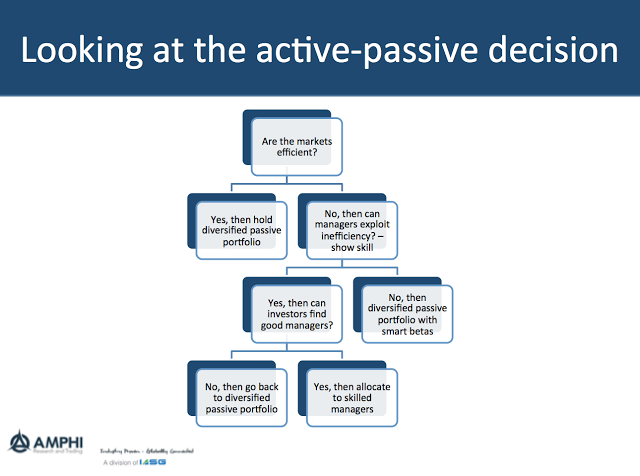Category: Alternative Investment Strategy
Managed Futures in a Drawdown – How Bad Is It? – Take a Look
As measured by a well-watched peer group index, the managed futures hedge fund strategy is in a significant drawdown. Despite this, money is still flowing as investors have taken a forward-looking view of what this strategy will do if there is a sell-off in major asset classes like equities. Of course, indices do not represent […]

ECB CISS Index; There is No Trend in Stress – Be Happy
Don’t worry, be happy and without stress. The ECB Composite Index of Systematic Stress (CISS) measures declining stress in the EU. While there is a big disclaimer with the ECB risk dashboard that this is not an early warning system, the declining trend tells a story of stability. This index serves as a European equivalent […]
The Icarus Trade: A Testable Concept or False Narrative?
We have heard the term “Icarus Trade” recently popping up in market discussions several times. In Greek mythology, Icarus creates wings to fly, but his overconfidence took him too close to the sun, where his wings burned, and he fell back to earth. In investment terms, the overconfidence of some investors will take them to […]

Can Momentum and Diversifications Solve Every Investment Problem?
I listened to a number of presentations concerning crisis alpha and crisis offset at a recent hedge fund conference. The idea of holding assets and strategies that will do well in “bad times” is a critical issue for any portfolio construction discussion. It is the bedrock and foundation of any portfolio that attempts to protect against bad states of nature, control risk, and gain during good times.
Momentum as the Big Embarrassment to Market Efficiency
“Momentum is a big embarrassment for market efficiency,” he proclaimed, saying he “hopes it goes away” and that the concept was “not exploitable.” – Eugene Fama from CFA Society of Chicago keynote speech. “Never let the truth get in the way of a good story.”― Mark Twain. You cannot help but think about Thomas Kuhn […]

Simplifying the Choice Between Active and Passive Investing
The choice between active and passive investing has been a battle that has been raging for years, but it can be simplified through a set of easy questions. The answers to these questions are not easy, but by forming a direct set of straightforward questions with a decision tree, the issues can be discussed in […]
Commodity Investing – What is it all About?
What is commodity investing all about: 1. The curves and carry – backwardation/contango (inventory). Given the cash market for commodities is often not available for investing, the primary market for investors in commodities is the futures. Consequently, the shape and dynamics of the futures curve is a dominant factor for longer-term investing. Investors cannot think […]
The Real Bias – Stock Optimists versus Bond Pessimists
During a simple discussion on investing, the topic turned to biases. We have learned to talk about many biases from behavioral economics. We now have a catalog of preferences which makes them easier to mitigate. Still, there seems to be one bias that is very hard to address, and that is the overarching theme of […]
Populism and the Market: Assessing Risks for Investors
There has been tremendous talk concerning populism and politics, but for investors, the focus still must be on these movements’ economic and market impact. So discount the news headline and rhetoric and focus on the potential market impact, but a good definition of populism is necessary for building a framework to determine risks. Defining Populism […]
The Role of Factors in Finance: A Focus on Global Macro Investing
What has been at the vanguard of thinking in finance is the breakdown of returns into their constituent parts or risk factors. Finance has moved well beyond market beta. The first breakdown for a portfolio is not returns by asset class but returns by risk factors. Some have criticized the current situation as a factor […]
Using Economic Growth as a Predictor for Managed Futures Returns
Another simple test to determine whether managed futures returns will do better than average is by looking at economic growth. We know that bonds and other defensive assets like managed futures will do better in “bad times,” such as a recession, but there are not many recessions. The cost of being defensive can be very […]
Managed Futures vs. Tight Financial Conditions: Who Wins in the Battle of Investment Strategies?
Financial conditions can inform us about periods when thises and market dislocations will occur. The graph above shows the time series for the Chicago Fed adjusted financial conditions index. The index measures liquidity, risk, leverage in money, debt, and equity markets, and traditional and shadowing banking measures. If the index is positive (negative), financial conditions […]
The Impact of Innovation on Commodity Price Forecasting
Forecasting is difficult for any financial asset but can be especially difficult for commodities. The peculiarities of futures, the potential for large supply shocks, and the higher volatility are associated with the varied interaction of hedgers and speculators. Still, there is also something that makes medium-term forecasts especially difficult – innovation. Innovation and technical change […]